Geology Reference
In-Depth Information
?
a trait (fl ower color as illustrated in Figure 18.4), but in fact,
many genes control most traits, and some genes show incom-
plete dominance. Nevertheless, Mendel discovered the answers
that Darwin and Wallace needed, although they were pub-
lished in an obscure journal and went unnoticed until three
independent researchers rediscovered them in 1900.
What Would You Do
Suppose that a powerful group in Congress mandated that all
future genetic research had to conform to strict guidelines—
specifi cally, that plants and animals should be exposed to
particular environments so that they would acquire character-
istics that would allow them to live in otherwise inhospitable
areas. Furthermore, this group enacted legislation that pro-
hibited any other type of genetic research. Why would it be
unwise to implement this research program?
Complex, double-stranded, helical molecules of
deoxyribo-
nucleic acid (DNA)
called
chromosomes
are found in the
cells of all organisms (
Figure 18.5). Specifi c segments or
regions of the DNA molecule are the hereditary units, the
genes. The number of chromosomes is specifi c for a single
species, but varies among species. For instance, fruit flies
◗
have 8 chromosomes (4 pairs), humans have 46, and domes-
tic horses have 64; chromosomes are always found in pairs
carrying genes that control the same traits.
Parental generation
Red flowers (RR)
White flowers (rr)
Cross-
fertilization
r
Ovules
Ovules
R
Self-
fertilization
Self-
fertilization
r
Pollen
Pollen
R
Red flowers (RR)
White flowers (rr)
Second generation
Red flowers (Rr)
Ovules
Pollen
r
r
R
R
Third generation
Red (RR)
Red (Rr)
Red (Rr)
White (rr)
◗
Figure 18.4
Mendel's Experiments In his experiments with fl ower color in garden peas, Mendel
used true-breeding stains. These plants, shown as the parental generation, when self-fertilized always
yield offspring with the same trait as the parent. If the parental generation is cross-fertilized, though,
all plants in the second generation receive the Rr combination of alleles; these plants will have red
fl owers because R is dominant over r. The second generation of plants produces ovules and pollen
with the alleles shown and, when left to self-fertilize, produces a third generation with a ratio of three
red-fl owered plants to one white-fl owered plant.





























































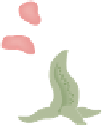




































































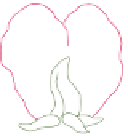


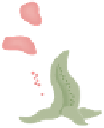





















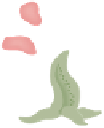






















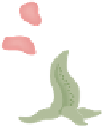












































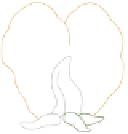





































































































Search WWH ::

Custom Search